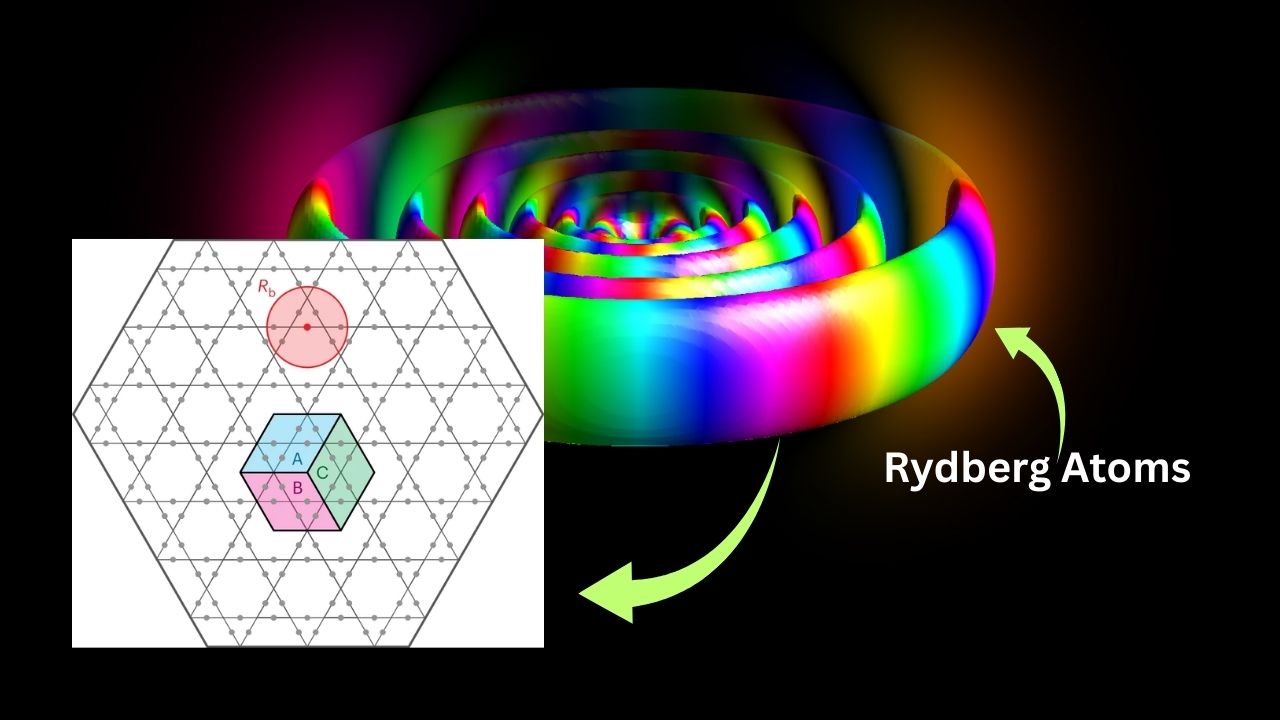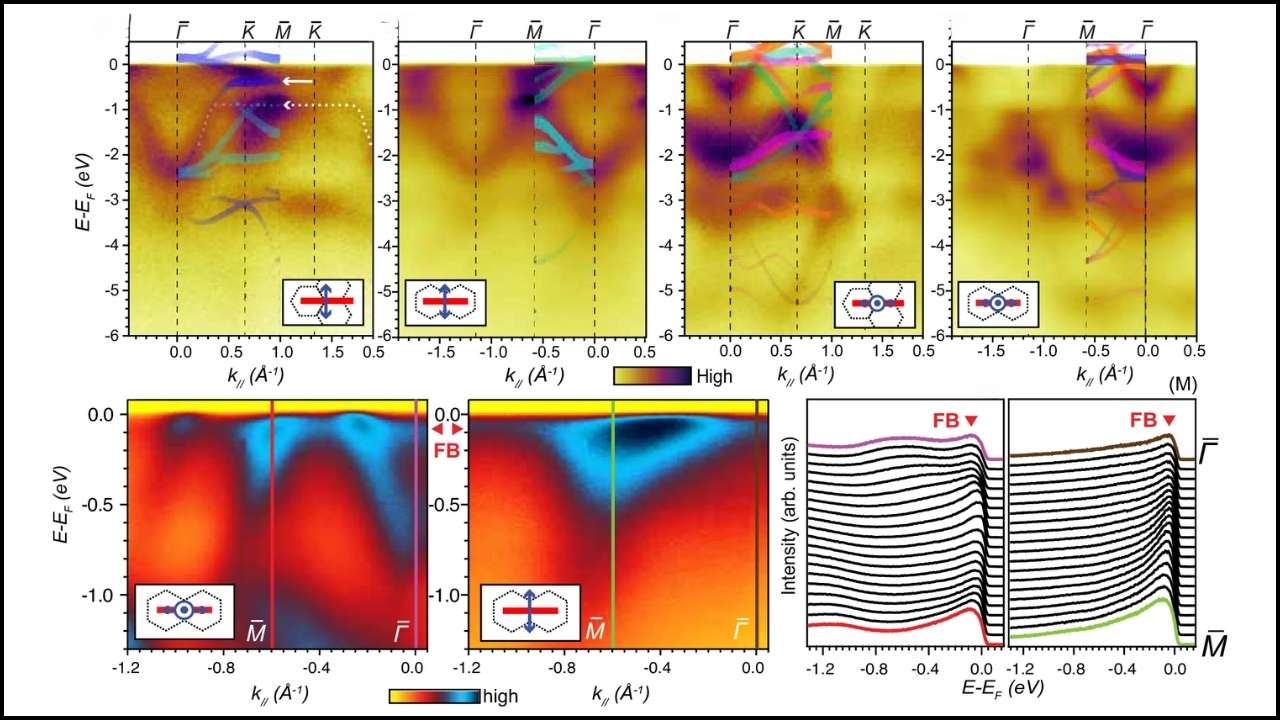Imagine a tiny, invisible world inside a simple green algae, where a giant virus lies quietly asleep, ready to awaken and change everything we thought we knew about gene editing. This isn’t science fiction — it’s a cutting-edge discovery made by scientists in 2025 that could revolutionize how we edit genes in plants, animals, and maybe even humans. The virus, named Punuivirus, was found integrated inside the genome of a common green alga called Chlamydomonas reinhardtii. This dormant giant virus holds the key to powerful new gene editing tools that might be cleaner, more precise, and more effective than what we have today.
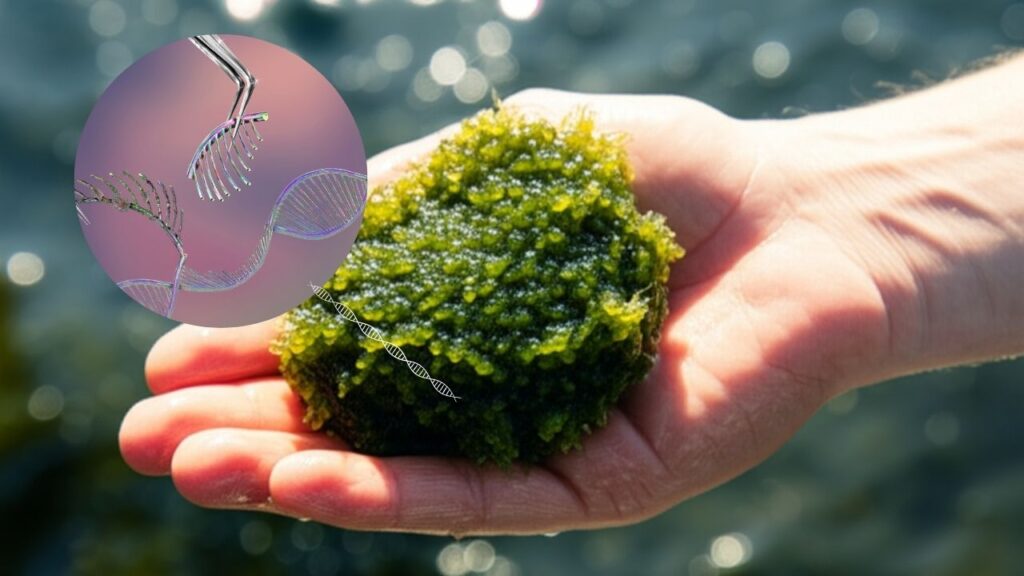
This article will break down what Punuivirus is, why it matters, how it works, and how this discovery might transform biotechnology — all explained simply enough for a 10-year-old to grasp, yet detailed enough for professionals and enthusiasts.
Dormant Virus Found in Algae Could Rewrite Gene Editing
| Feature | Details |
|---|---|
| Virus Name | Punuivirus |
| Host Organism | Green alga Chlamydomonas reinhardtii |
| Discovery Year | 2025 |
| Research Lead | Virginia Tech, Frank Aylward & Maria Paula Erazo-Garcia |
| Virus Size | Largest temperate virus discovered with latent infection cycle |
| Unique Feature | Integrates DNA into host genome and reactivates without killing host |
| Role in Gene Editing | Potential new gene delivery and editing tool using viral integrase and unique nucleases |
| Gene Editing Comparison | Alternative or complement to CRISPR-Cas systems |
| Applications | Genetic engineering in agriculture, medicine, environmental science |
| Official Research Publication | Science (April 2025) – Virginia Tech Biological Sciences |
The discovery of Punuivirus in algae is a game-changer in virus biology and gene editing. This largest known dormant virus challenges old beliefs about viral infections and reveals nature’s sophisticated methods for DNA integration. By understanding and harnessing its unique enzymes, scientists may develop more precise, efficient, and versatile gene editing tools—opening new doors for agriculture, medicine, and beyond.
This breakthrough reminds us that nature often holds the best solutions; we just need to look closely. As researchers continue exploring Punuivirus and its genetic toolkit, the future of gene editing looks brighter and more exciting than ever.
What Is Punuivirus and Why Is It Important?
At first glance, green algae might seem simple. But Chlamydomonas reinhardtii has been an essential model organism for decades in biological labs worldwide. Despite this, scientists had no idea a giant virus was hiding inside its genome until researchers at Virginia Tech made the breakthrough.
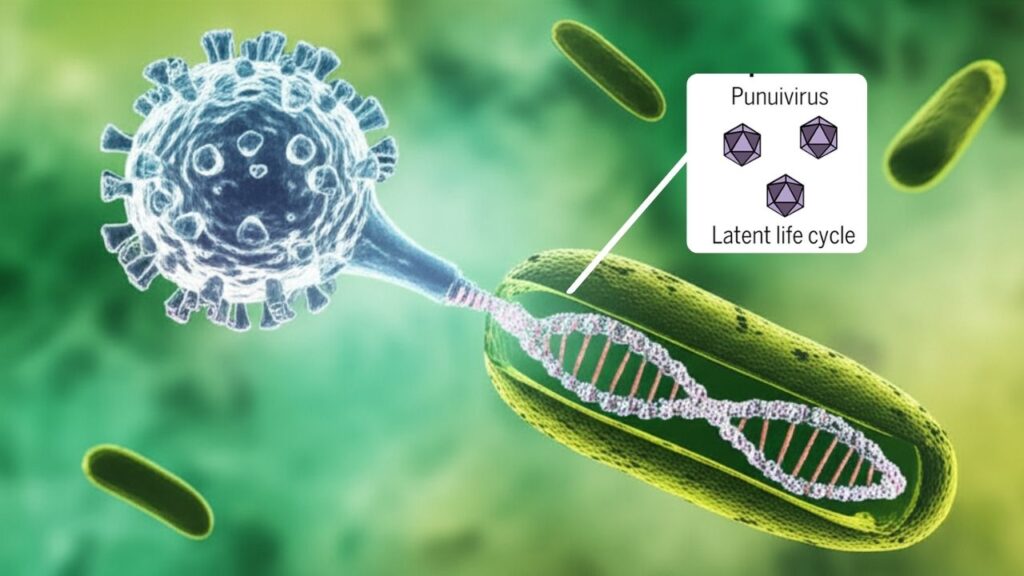
Punuivirus is unique because it is a giant virus that can hide dormant inside the host’s DNA — a characteristic called a latent infection cycle. Unlike viruses that attack and destroy their hosts immediately, this one can quietly merge its own genetic material into the alga’s genome and stay undetected for a long time. Then, it can reactivate to produce new virus particles without killing the alga, allowing both to coexist.
This kind of integration and reactivation is rarely seen in viruses of such size and complexity.
How Does Punuivirus Work?
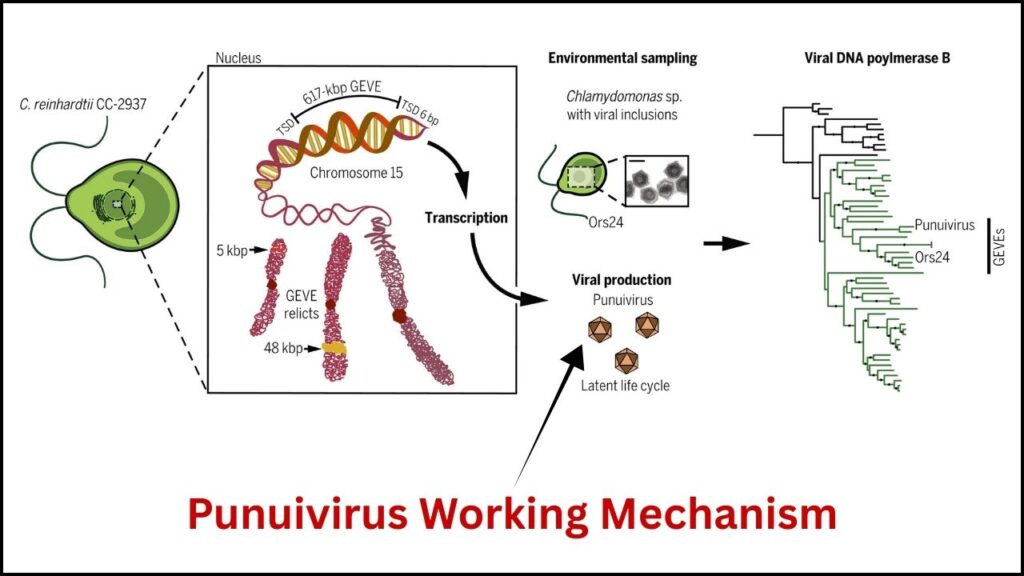
Viral Integration: The DNA Insertion
In simple terms, the virus acts like a tiny piece of software that inserts itself into the host’s main program (the genome). Scientists believe Punuivirus uses an enzyme similar to integrase — the same enzyme retroviruses like HIV use to insert their DNA into host cells.
This enzyme allows the virus to seamlessly slip its DNA into the algal chromosomes. Then, the viral DNA stays hidden and silent for long periods — sometimes years.
Dormancy and Activation: The Viral ‘Sleep Mode’
What makes this virus sleep or awake is a mystery scientists are actively investigating. It seems environmental signals or internal cell states might trigger the virus to “wake up” and start producing viral particles again.
Interestingly, the virus doesn’t destroy the algae in the process. It releases relatively small numbers of new viruses, allowing the host to survive and replicate with the virus still inside.
Why Does This Discovery Matter to Gene Editing?
Gene editing is like rewriting the instruction manual of life. Today’s most famous tool, CRISPR-Cas9, acts like molecular scissors cutting DNA at specific locations to add, remove, or replace genes. While revolutionary, CRISPR has challenges such as off-target cuts and limits on the size of DNA it can insert.
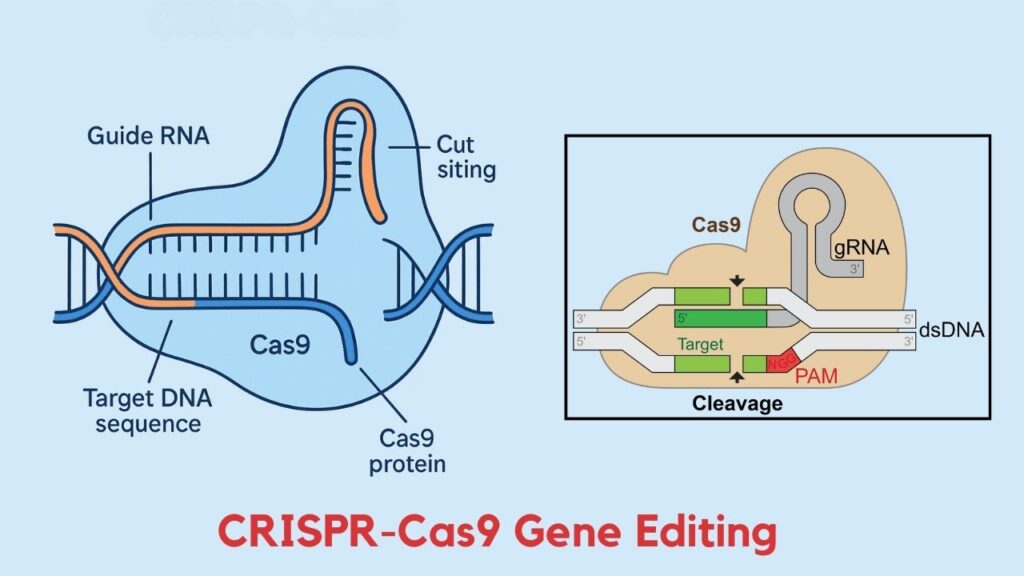
Punuivirus offers a novel approach:
- Precise DNA integration: The virus’s integrase enzyme could be engineered to insert large stretches of DNA directly and cleanly into targeted spots in the genome, potentially outperforming CRISPR for specific tasks.
- RNA-guided nucleases: The virus carries unique nucleases called Fanzor nucleases, which work differently than Cas enzymes and are guided by short RNA molecules—offering a broader gene editing toolkit.
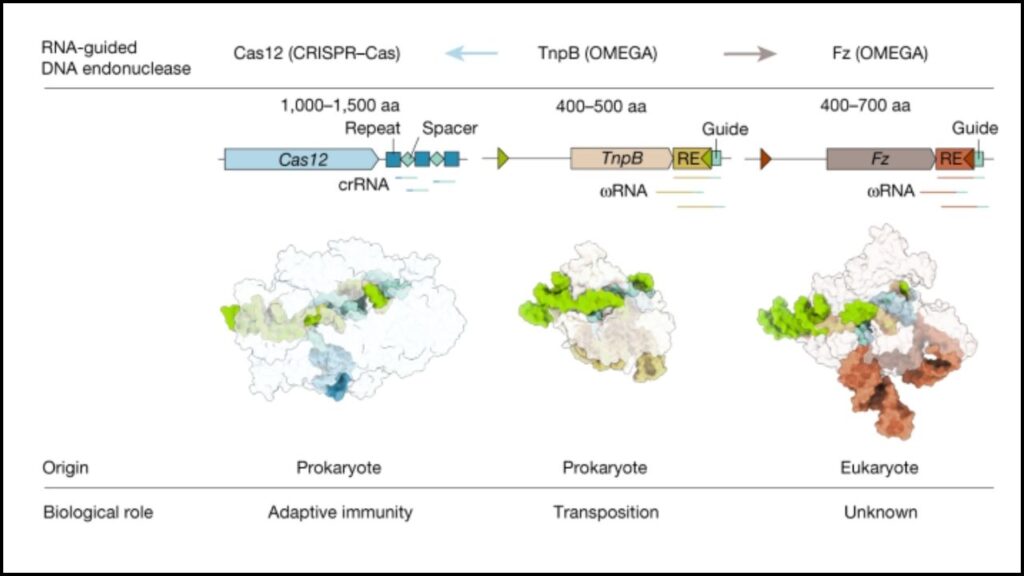
- Stable gene insertion with controlled reactivation: Learning to control the viral “alarm clock” could allow gene therapies or genetic modifications to be switched on demand without permanent or harmful DNA cutting.
In simple terms, Punuivirus already mastered the “cut-and-paste” gene editing inside algae millions of years ago, and we can tap into that natural machinery today.
Practical Applications of Punuivirus-Based Gene Editing
Below are some promising fields that can benefit from this discovery:
| Sector | Potential Impact |
|---|---|
| Agriculture | Engineering crops with improved traits, pest resistance, and faster growth using precise DNA insertion |
| Medicine | Safer gene therapies with controlled activation and larger gene constructs |
| Environmental Science | Editing algae or other microorganisms to boost biofuel production or clean pollutants |
| Synthetic Biology | Creating novel organisms or systems by inserting customized genetic circuits |
Step-by-Step: How Punuivirus Could Change Gene Editing Methods
- Isolation of Punuivirus enzymes
Scientists extract integrase and nucleases from the virus for study. - Engineering enzyme specificity
Modify viral integrase to recognize specific DNA sequences in target organisms. - Developing delivery systems
Design safe methods to deliver these enzymes and DNA cargo into cells (similar to how viral vectors are used in gene therapy). - Testing precision and safety
Extensive screening to minimize “off-target” gene insertion and unwanted side effects. - Application in real-world editing
Employ the system to insert therapeutic genes into human cells or improve crops.
Scientists Rewrite a Material’s Magnetic DNA Using Light: A Groundbreaking Leap in Material Science
Breakthrough in DNA Machines: How Scientists Are Turning DNA Into Programmable Molecular Robots
Scientists Use DNA as a Building Block to Create Customized 3D Materials with Unique Properties
FAQs About Dormant Virus Found in Algae Could Rewrite Gene Editing
Q: What is a latent virus?
A: A virus that integrates its DNA into the host cell genome and stays inactive (dormant) for some time before possibly reactivating.
Q: How is Punuivirus different from other viruses?
A: It’s one of the largest viruses known to integrate into host genomes without killing the host and can reactivate while keeping the host alive.
Q: How does this discovery compare to CRISPR?
A: Punuivirus offers alternative enzymes and mechanisms for inserting DNA, potentially addressing some CRISPR limitations like DNA size insertion and off-target effects.
Q: Can this virus infect humans?
A: No evidence suggests Punuivirus infects humans; it’s specific to the algae Chlamydomonas reinhardtii.
Q: How soon can this be used in gene editing technology?
A: The discovery is recent, and extensive research and development are needed before it becomes a practical tool.
